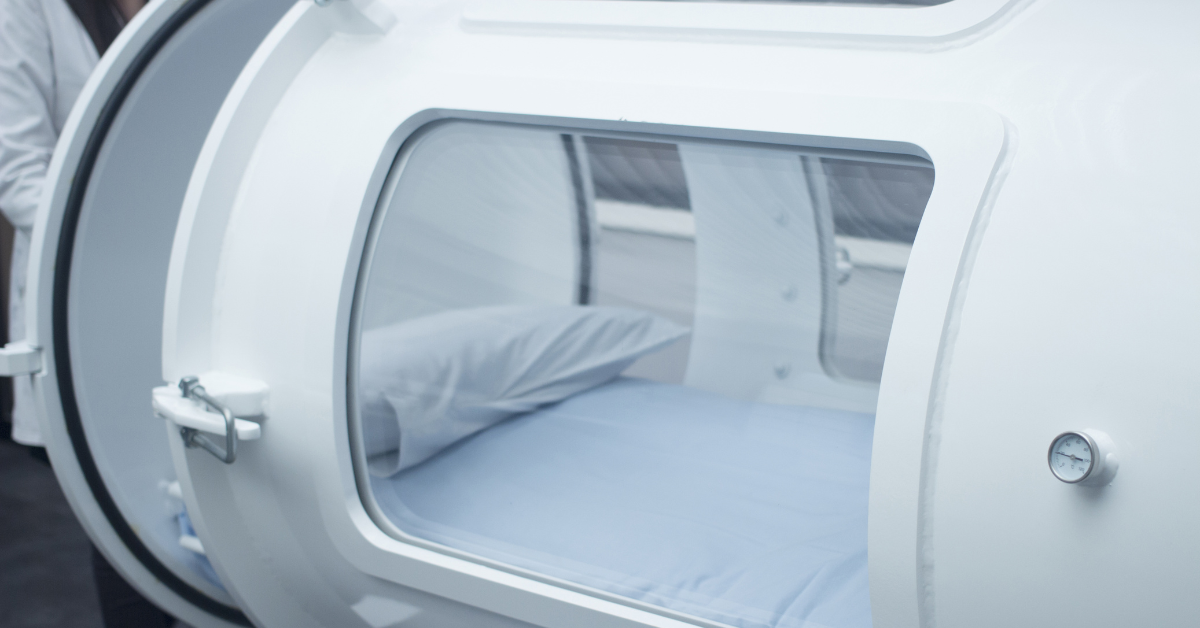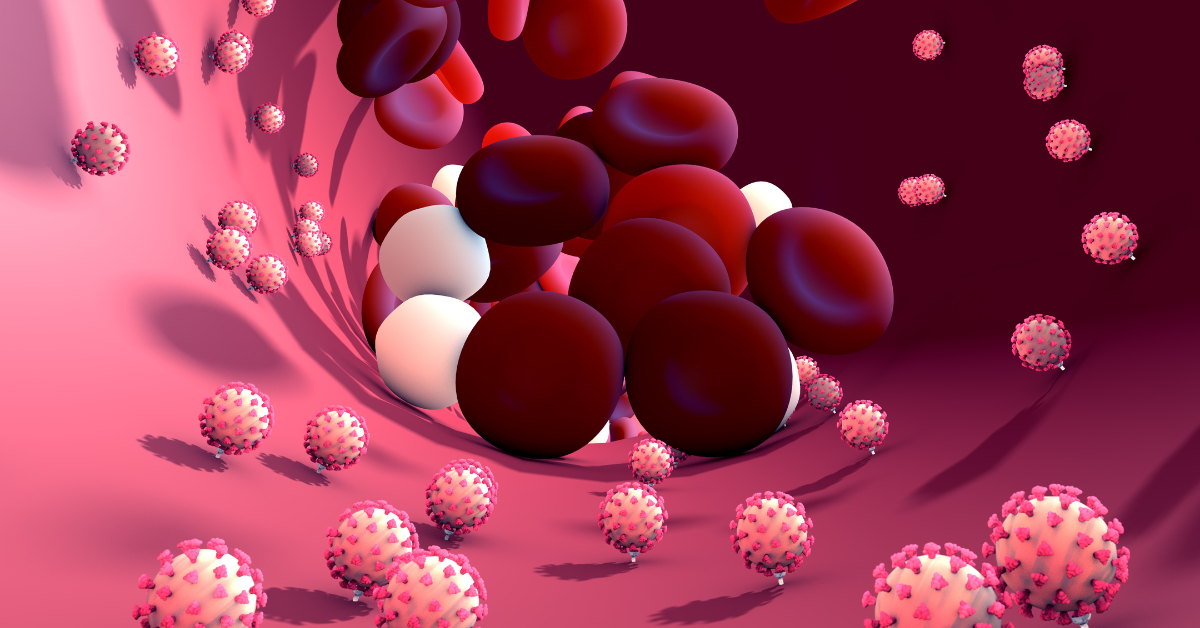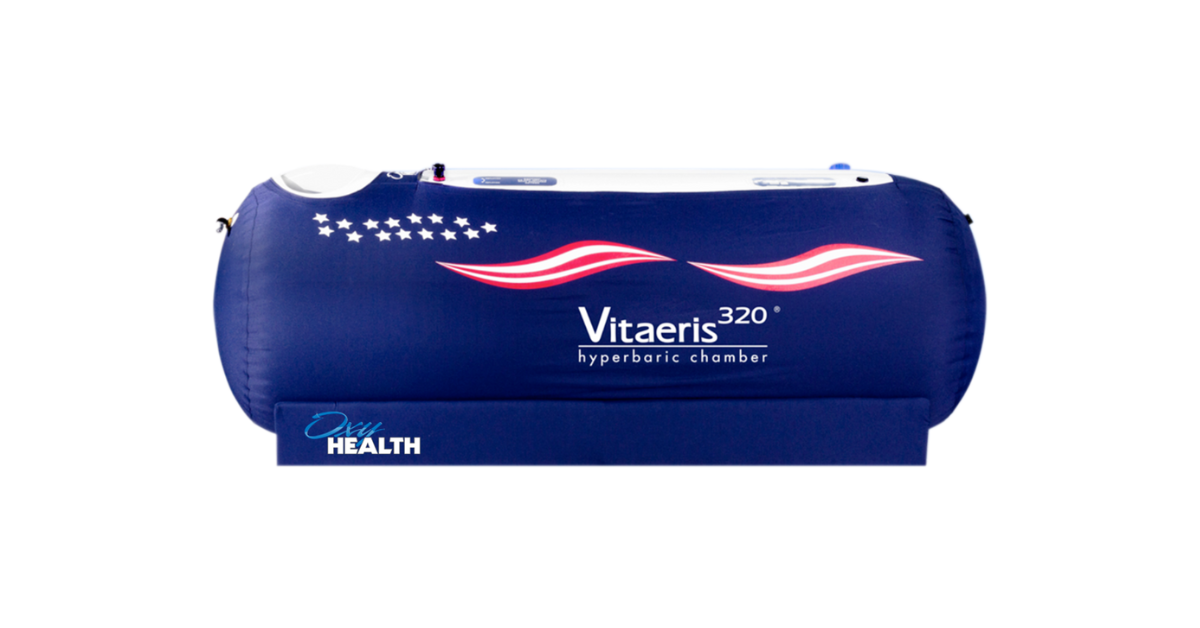Have you been struggling with stubborn, non-healing wounds and looking for an effective treatment option? Enter the world of hyperbaric oxygen therapy (HBOT), a medical treatment that has demonstrated success in promoting wound healing and addressing various medical conditions. In this article, we'll explore the science behind HBOT, how it enhances the wound healing process, and the types of wounds it can treat. So, sit back and join us as we delve into the potential of hyperbaric oxygen therapy for healing wounds resistant to conventional treatments.
What is Hyperbaric Oxygen Therapy?

Hyperbaric oxygen therapy (HBOT) is a therapeutic procedure where individuals inhale pure oxygen at a heightened atmospheric pressure within a closed chamber. This pressurized environment, typically one to three times greater than regular air pressure, enables the body to intake a higher amount of oxygen compared to normal circumstances. This elevated oxygen concentration in the bloodstream can assist in treating different medical ailments and accelerate the process of wound recovery.
The Science Behind Hyperbaric Oxygen Therapy
When the body is exposed to increased air pressure, the blood can carry more oxygen to tissues and organs. This extra oxygen can help stimulate the growth of new blood vessels, improve circulation, boost the immune system, and reduce inflammation. All of these factors contribute to the wound-healing process, making hyperbaric oxygen therapy an effective treatment for chronic and nonhealing wounds.
Numerous studies suggest hyperbaric oxygen therapy is effective for improving the wound healing process, particularly for chronic wounds and diabetic foot ulcers. Hyperbaric oxygen therapy has been shown to promote the release of growth factors and stem cells, which play a crucial role in tissue regeneration and repair. In addition, HBOT can also aid in collagen deposition, which is essential for wound healing and skin grafts. By targeting various aspects of the wound healing process, hyperbaric oxygen therapy has emerged as a valuable adjunctive treatment for complex wounds, significantly improving clinical outcomes and reducing the risk of major amputations in patients with peripheral arterial disease and diabetic foot ulcers.
Types of Wounds Treated with Hyperbaric Oxygen Therapy
Hyperbaric oxygen therapy is commonly used to treat a variety of wounds that have not responded well to other treatments. Some of the most common types of wounds treated with HBOT include diabetic foot ulcers, radiation injuries, and gangrene.
Diabetic Foot Ulcers
Hyperbaric oxygen therapy has been demonstrated to be an effective supplementary treatment for diabetic foot ulcers, a frequent diabetic complication that affects up to 25% of diabetic patients throughout the course of their lives. Because of inadequate circulation, nerve damage, and a weakened immune system, these ulcers are frequently difficult to heal.
To address this, diabetic patients with foot ulcers undergo a hyperbaric oxygen therapy session where they are placed in a hyperbaric chamber and breathe pure oxygen at elevated air pressure.
Chronic and Nonhealing Wounds
Chronic wounds, such as pressure ulcers and ischemic wounds, are characterized by their prolonged healing time and resistance to conventional treatments. Non-healing wounds, on the other hand, are wounds that show no significant progress in healing over a period of time. Both types of wounds can greatly benefit from hyperbaric oxygen therapy, as the increased blood oxygen levels can help to promote healing in these otherwise difficult-to-treat wounds.
Radiation Injuries and Gangrene
Radiation injuries, such as those caused by radiation therapy for cancer, can damage healthy tissue and blood vessels, leading to nonhealing wounds. Gangrene, which is tissue death due to a lack of blood supply, can also result in nonhealing wounds. Hyperbaric oxygen therapy can be an effective treatment for both radiation injuries and gangrene, as it aids in enhancing circulation, stimulating the creation of new blood vessels, and advancing the healing process.
How Hyperbaric Oxygen Therapy Enhances Wound Healing

Hyperbaric oxygen therapy enhances wound healing by increasing oxygen levels, promoting cellular metabolism, stimulating angiogenesis, and reducing inflammation. Here are some of the ways in which HBOT helps to promote wound healing:
Increased Blood Oxygen Levels
During a hyperbaric oxygen therapy session, the increased air pressure allows the blood to carry more oxygen than it would under normal conditions. This extra oxygen is then delivered to the tissues and organs, helping to promote healing and regeneration.
Increased blood oxygen levels also help to reduce inflammation, which is a key factor in the wound-healing process. Inflammation is the body's natural response to injury, but excessive inflammation can hinder the healing process and lead to the formation of chronic wounds. By reducing inflammation, hyperbaric oxygen therapy can help to promote the healing of both acute and chronic wounds.
Stimulating the Growth of New Blood Vessels
Hyperbaric oxygen therapy activates a process known as angiogenesis, which promotes wound healing by stimulating the growth of new blood vessels. New blood vessels are essential for delivering oxygen and nutrients to the wound site, which helps to support cell growth and tissue repair.
Improved Circulation
Hyperbaric Oxygen Therapy (HBOT) helps to improve circulation throughout the body. The therapy is based on the idea that more oxygen leads to more energy, which in turn leads to better function, quicker repair and healing, enhanced growth, and regeneration. The increased blood oxygen levels provided by the treatment help to dilate blood vessels, which can improve blood flow to the affected areas. This is particularly beneficial for individuals who may have poor circulation due to medical conditions such as peripheral arterial disease or diabetes. Improved circulation can not only help deliver vital nutrients and oxygen to the wound site, but it can also aid in removing waste products and toxins, which can further enhance the wound healing process.
Some of the benefits of Hyperbaric Oxygen Therapy include increased cellular energy and tissue function, regeneration of new blood vessels and new tissue, a significant reduction in swelling and inflammation, strong pain-relieving effects, enhanced immune function to help in fighting infections, and enhanced cellular protection for the body.
Boosted Immune System and Reduced Inflammation
Hyperbaric oxygen therapy has been shown to boost the body's immune system by stimulating the production of white blood cells, which play a crucial role in fighting infection and promoting healing. The extra oxygen provided during the treatment can also help to enhance the function of these immune cells, allowing them to more effectively combat bacteria and other pathogens that may be present in the wound site. In addition to its immune-boosting effects, hyperbaric oxygen therapy can also help to reduce inflammation, as mentioned earlier.
The Hyperbaric Oxygen Therapy Process

Typical Session Duration and Frequency
A typical hyperbaric oxygen therapy session lasts around 45-90 minutes, during which the patient is surrounded by pressurized oxygen in an enclosed chamber.
Factors Affecting the Number of Sessions
The total number of hyperbaric oxygen therapy sessions required for complete wound healing or other health benefits can vary greatly depending on several factors, including the severity of the wound or condition, the patient's overall health, and their response to the treatment. HBOT's effects can range from immediate anti-oxidant and protective roles, to anti-inflammatory responses within 4 days, pain relief after 5 to 10 sessions, and new blood vessel formation (angiogenesis) in 10 to 20 sessions.
Other factors that may influence the number of sessions include the presence of underlying medical conditions, such as diabetes or peripheral arterial disease, and the patient's adherence to other wound care treatments and recommendations. The 40-hour protocol is the gold standard for many physiological benefits observed with HBOT, but actual physiological benefits can be seen in just a few sessions. Most research studies use 60-90 minute HBOT sessions, but shorter duration sessions (20 to 30 minutes) are also getting positive feedback.
Benefits from HBOT may vary between individuals, with some seeing immediate benefits while others may not notice them until the completion of their series of sessions. Most of the benefits are reported up to around 4 weeks following the '40-hour protocol.' As with any medical treatment, it is recommended to consult with a healthcare professional to determine the appropriate number of sessions for each individual's specific needs.
Percentage of Wounds Healed by Hyperbaric Oxygen Therapy
Hyperbaric oxygen therapy has proven to be an effective treatment option for various types of wounds, with studies showing that approximately 75% of wounds can be healed using this method. Recent studies have demonstrated the potential of hyperbaric oxygen therapy in treating peripheral nerve injury and aiding in recovery from spinal cord injuries.
A study reviewing the literature on the treatment of peripheral nerve injury with hyperbaric oxygen therapy (HBOT) showed that it was beneficial in 88% (45/51) of the included studies, improving nerve regeneration and/or time to recovery without any major adverse events. This includes 82% of human studies and 90% of animal studies, suggesting that HBOT could be a promising treatment for peripheral nerve injury.
Duration of Healing Effects
Individual results may vary, however, research shows that hyperbaric oxygen therapy healing effects can last for up to 12 months. The length of these effects is determined by factors such as the person's well-being, the state of the wound, adherence to the treatment plan, and any necessary follow-up care.
It is essential for patients to continue monitoring their wounds and seek medical attention if there are any signs of complications or recurrence.
Potential Side Effects and Risks
While hyperbaric oxygen therapy is generally considered a safe treatment option, there are some potential side effects and risks associated with the procedure. These can include:
Temporary Side Effects
Some patients may experience temporary side effects during or after a hyperbaric oxygen therapy session, such as:
-
Ear pain or discomfort due to changes in air pressure
-
Fatigue
-
Lightheadedness or dizziness
-
Nausea or vomiting
These side effects are typically mild and resolve on their own without the need for additional medical intervention.
Rare Complications
Although rare, there are some more serious complications that can occur during or after hyperbaric oxygen therapy, such as:
-
Oxygen toxicity, which can lead to seizures, respiratory failure, or damage to the central nervous system
-
Barotrauma, or injury to the ears, sinuses, or lungs caused by changes in air pressure
-
Decompression sickness is a condition that can occur when the body experiences rapid changes in air pressure
Who is Not Suitable for Hyperbaric Oxygen Therapy?

While hyperbaric oxygen therapy can be beneficial for many patients, it is not suitable for everyone. Some conditions or situations may make it unsafe or ineffective for certain individuals, such as:
-
Severe congestive heart failure
-
Untreated pneumothorax (collapsed lung)
-
Active infections or fever
-
Certain types of cancer
-
Uncontrolled high blood pressure
-
Pregnancy
It is essential to consult with a healthcare professional before undergoing hyperbaric oxygen therapy to determine if it is an appropriate treatment option for your specific situation. It is important to note that the information provided on this website is for educational purposes only and not intended as a substitute for professional medical advice.
Insurance Coverage for Hyperbaric Oxygen Therapy
Hyperbaric oxygen therapy is covered by some commercial insurance plans for specific medical conditions, such as diabetic foot ulcers, chronic nonhealing wounds, and carbon monoxide poisoning. However, coverage may vary depending on the individual insurance plan and the specific medical condition being treated. It is essential to check with your insurance provider to determine the extent of coverage for hyperbaric oxygen therapy and any associated costs or copayments.
Investing in a hyperbaric chamber for home use can provide added benefits. Having a hyperbaric chamber at home enables convenience and accessibility for regular therapy sessions, eliminating the need for frequent travel to medical facilities. It can be particularly advantageous for individuals with chronic conditions or those who require long-term HBOT treatment.
FAQs About Hyperbaric Oxygen Treatment
How long does a hyperbaric oxygen therapy session last?
Most research studies use 45-90 minute HBOT sessions, but shorter duration sessions (20 to 30 minutes) are also getting positive feedback. However, the severity of the wound being treated as well as the patient's specific needs can cause the duration to vary. It is common for patients to undergo multiple sessions per week, often for several weeks, to achieve the desired wound healing results. HBOT is generally not recommended for more than 60 to 90 minutes per session for safety reasons.
Can hyperbaric oxygen therapy be used for all types of wounds?
While hyperbaric oxygen therapy (HBOT) has been proven effective in treating various types of chronic and nonhealing wounds, it is not suitable for all wound types. Some wounds may not benefit from HBOT, and other treatments may be more appropriate. The FDA has approved HBOT for healing in selected problem wounds as one of the 14 conditions for treatment. Some of the benefits of HBOT include increased cellular energy and tissue function, regeneration of new blood vessels and new tissue, a significant reduction in swelling and inflammation, strong pain-relieving effects, enhanced immune function, and help in fighting infections.
How effective is hyperbaric oxygen therapy for wound healing?
Hyperbaric oxygen therapy has been proven to be an effective treatment option for various types of wounds, with studies showing that approximately 75% of wounds can be healed using this method. The success rate depends on several factors, such as the type of wound, the patient's overall health, and their adherence to the treatment plan. It is crucial to remember that hyperbaric oxygen therapy is typically used in conjunction with other wound care treatments, which can increase the overall success of wound healing.
What is the best treatment for acute sports injuries?
Based on this study, hyperbaric oxygen therapy could be a beneficial treatment for acute sports injuries. The therapy, which is well-established in diving medicine, is being explored for wound management due to oxygen's key role in the healing process. Initial research on hyperbaric oxygen in sports-induced injury has shown promising results, including in some cases, significant acceleration of healing. The potential benefits for sports injuries include a reduction of initial injury, possibly by controlling the adhesion of neutrophils and the release of oxygen-free radicals, as well as enhancing healing processes that require oxygen, such as collagen formation and phagocytosis.
Financing Your Hyperbaric Oxygen Therapy Equipment
Investing in hyperbaric oxygen therapy (HBOT) equipment for wound healing can be a significant decision, but it doesn't have to be a financial burden. Airpuria offers financing options to make your investment more affordable so you can experience the remarkable benefits of HBOT without breaking the bank.
For individuals who qualify, Airpuria provides 0% interest rates for up to 18 months.
Business owners can also apply for special financing programs that have flexible terms and competitive rates.
To explore these financing options, visit the following links:
-
Financing for individuals: https://www.7figures.app/Airpuria
-
Financing for businesses: https://reliantcapitalgrp.com/airpuria
Extra Information About HBOT:
HBOT Chambers from Airpuria (Free Shipping):
Prescription or Doctor's Note
To purchase an Oxyhealth Hyperbaric Oxygen Chamber, a prescription or doctor's note is required. You can either upload the document above or send it to sales@airpuria.com. Submit your doctor's note within 2 weeks of your purchase. If you have any questions or need to speak to one of our licensed doctors, contact The Airpuria team for assistance.

